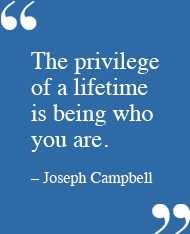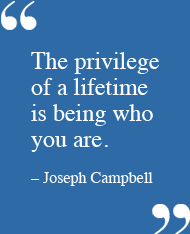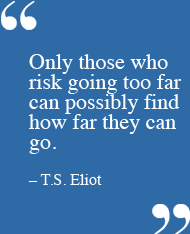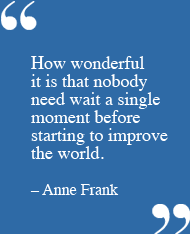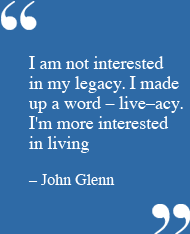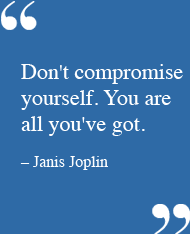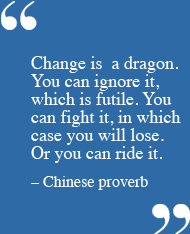News
Refuting 'The Downside of Diversity' My Letter to the Wall Street Journal
The Wall Street Journal published a shortened version of my letter to the editor August 9-10, 2019 refuting Kronman's 'The Downside of Diversity' here. In case you cannot access it, here is the unedited version:
Mr. Kronman’s “The Downside of Diversity” August 3-4, 2019 is cleverly constructed to convince, but also ignores America’s own history. Diversity is not the equivalent of identity politics, much as that would help him convince us. I can understand why a law professor might miss nuances of the English language, but reading on, I realize he’s a master at twisting words, aka 'truth' as he defines it. Diversity within work teams has been demonstrated to be a plus, not a negative, in corporate decision making. The professor wants us to see the downside of diversity when suggesting students claim, “something is true because I believe it or feel it to be true.” Even Tocqueville and Aristotle honor the individual experience, which today means acknowledging the trauma faced for centuries by blacks in America. Toqueville’s “islands of culture” Kronman so admires exist – in spite of over half of America's enslaved population being separated from their families (see www.EJI.org) – in spite of the post-civil war domestic terrorism, when race riots erupted, entire business districts exemplifying black capitalism were burned and 4000 lynchings took place from 1867-1950. Still today, in spite of the mass shootings by white supremacists – in spite of the killings of unarmed blacks by police officers – in spite of the injustices, such as the Central Park Five, the black community is standing tall. These historical facts are not feelings but rather serve to retraumatize an entire people. Kronman criticizes this ‘culture of grievance and group loyalty.’ When Robert Smith gave his $40 million gift to Morehouse graduates this spring, he spoke of the resilience of the black community, challenging the graduates to pay it forward, take care of their own. If sticking together, voicing ‘true’grievances, naming historical facts, and calling out racist behavior is wrong, then I don’t want to be right. And that’s the truth!
Charlotte Beyer
August 3, 2019
So...What Happened When Principle Quest Went to Alabama?
"Not everything that is faced can be changed, but nothing can be changed until it is faced”
-James Baldwin
Who went?
Our group: JerriAnne Boggis, Valerie Cunningham, Dana Dakin, Alexandria Lee Harris, and Diane Lucas.
What preparation was expected by those who came on the trip?
There were articles, videos and books and the web site of the Equal Justice Initiative and Black Belt Community both have videos to watch and valuable material to read. Click here to see.
What was the itinerary?
The group of six spent three days together. We drove from Atlanta to Selma on Tuesday morning, stopping for lunch. We visited with the Black Belt Community Foundation in the afternoon and returned to Montgomery to check into our hotel. We enjoyed a 90-minute tour of Montgomery in a small jitney that same evening. All day Wednesday was devoted to first, the Equal Justice Initiative’s Legacy Museum all morning and then the Memorial all afternoon. Later that evening we had a dinner with local business and civic leaders along with non-profit professionals. We drove back to Atlanta on Thursday for flights home.
What were our impressions and reflections?
From Felecia Lucky, our host, The Black Belt Community Foundation:
Dear distinguished Black Belt Community Friends, Charlotte, Dana, JerriAnne, Alexandria, Valerie and Diane,
On behalf of myself and BBCF, I wanted to tell you how deeply touched and grateful we all our for everyone who travelled in from afar (some very afar) and near to join us at Tabernacle Baptist Church yesterday.
There surely was so much love, respect, passion and expertise represented in that room when we all came together to get to know each other more that you could really feel it in the air. I know that yesterday was just the beginning of many new, solid connections that have been formed.
To Charlotte and team, we thank you so much for all the time you took planning your trip to include visiting with us and for your very gracious gift of financial support both in donation and in hosting the tea.
Attached is our wonderful group photograph from Winfield Ezell. Jr. We are planning some special posting online with our social media starting today, and hope that you will cherish this photo memory as much as we do.
With much love and respect,
Felecia Lucky
Impact of the EJI Museum and Memorial
From Alex
The impact of the museum was profound. I can’t say that I learned anything new, but the intentional way that everything was placed and consolidated provided a fresh and deep impact. I believe it is THE must see museum in our country.
As soon as I stepped into the foyer of the museum, the mood was set. The video they showed was made in conjunction with HBO, so it was well produced. It showed the impact of a family being ripped apart in a painstaking manner that really hurt to watch. From the beginning, the museum demonstrated the harm of domestic slavery in a way that is often neglected. It was powerful. To think that half of all Black Americans brought to the United States were separated from their families is staggering. It made me think about the impact that we still experience in our families because of slavery.
The entire day was deeply personal. At the monument, I walked through the pillars of Virginia, South Carolina, and North Carolina looking for names of my family members. It reminded me of how people search the wall at the Vietnam Memorial in Washington DC, but the feeling was way worse. I didn’t know what I would find. There was an impending doom, as I searched the names hoping I wouldn’t see any last names connected to my family. That overall feeling of dread and pain erupted when one of the EJI staff members asked if Diane and I wanted more information.
She shared that the steel chosen for the monuments reflected the many colors of African Americans. She also explained that since it has been treated it bleeds when it rains. But, the real reason it was chosen is because it self-heals, reflecting the resilience of our people. That last fact made me weep. I still get choked up even writing it now. The woman physical consoled me as I cried.
I was also struck by how many of the lynchings were initiated because of something a white woman said (whether she felt physically threatened, was offended by language, or merely annoyed). This made me think so much of today and all of the white women calling the police on black children. It made me feel angry and very fearful for the two black boys that I’m bringing into this world.
The museum was overwhelming for me. I experienced sensory and information overload. At one point, I actually became dizzy and had to sit down. By the end of the day, I was emotionally raw and exhausted. All of the stress of the day actually caused me to have a physical reaction. I felt sick to my stomach, my head ached, and I was exhausted.
My advice:
My advice to anyone attending the museum and monument is to allot the proper amount of time. I felt a little rushed because the monument was closing when I was about 3/4th finished. Also, I’d say that it’s important to go the journey alone, which might mean breaking away from your group. You want to have the space to read everything and sit and watch as many videos as possible to get the full experience.
I think it’s also important to be patient with yourself through the difficult content, while also pushing through the discomfort and forcing yourself to take in as much as possible.
From Diane
Alex summed up my reflections well. I would just add that although I did not want to retreat to my room after the museum and memorial like Alex, I wanted to have a space to debrief and talk about what we saw and heard, and how we could do something collectively or individually about addressing these injustices. Or, simply just have time and space to reflect. Alex and my mutual friend, who told us about her work retreat to EJI, had that opportunity and I think that was really helpful in processing and healing. I do strongly feel that that should be optional because everyone may not want to process in that way.
I mostly avoided people after the monument. I kept to myself a lot. I also took a nap. If it were up to me that is how my day would have ended. But, I attended the evening dinner event, still feeling very sick, tired, and sad.
I also think it would be great to hear from social justice leaders in Alabama about the work that they are doing particularly around criminal justice and education reform, and seeing if there’s opportunities for us to help them or them to help us in our work.
A story from Diane and Alex:
Lyft Driver: on our travel day home, Diane and I made a morning stop at a cupcake place in Montgomery that was recommended to us by the owner of the Coffee Shop in Selma. We call a Lyft to get there and back. The driver was a black man in his 30s (husband and father of two young children).
He asked, “What do you think of the monuments?” Since we thought he was talking about the Confederate monuments we told him they have to go. He continued, “Right! It’s monetizing slavery. That’s not right.” When realized he was possibly talking about the Legacy Museum and Peace and Justice Monument, so we asked clarifying questions. He said, “I’m talking about the next monument that benefits from slavery. I spoke to an old man who has lived in Montgomery his whole life, and he said he will NEVER go because it glorifies slavery. How can they make money off of slavery?!”
Diane and I explained that it was quite the opposite. We gave him the history of EJI. We explained how amazing the museum and monument are with their relatively inexpensive ticket prices, free days, and all the jobs they provide. We also talked about the community engagement. He was shocked, and thanked us for educating him. He felt ashamed that he formulated an opinion based on someone else’s ignorance. He said he would take his whole family.
What is the commitment of the Principle Quest Foundation?
What is my personal commitment since returning?
Principle Quest Foundation gave a donation to both the Equal Justice Initiative and the Black Belt Community Foundation. Another trip is in planning stages for July 23-25 and November 12-14, also to be underwritten by the foundation.
Personally, I gave a donation to the Black Heritage Trail of New Hampshire and am organizing a Gathering of Principle Quest women this July in NYC to beta test four case studies inspired by this trip.
My personal reflections: I have struggled since returning. First, I had to face my own upset, anger, and a fierce desire to create change. I have asked myself, who should I be addressing? What am I trying to persuade them to do – or change? Those most wounded? Or, those who have wounded, and are now slowly awakening to the horrors of our own history? I’m aware of a poison in our country’s DNA, embedded in our school’s textbooks, nurtured by how we tell our history, and unquestioned by our government. All of us need to face the truth, as Bryan Stevenson so eloquently urges, learn what really happened in these periods – from the legacy of slavery, the Great Betrayal, domestic terror and lynching, the Great Migration, Mass Incarceration, to today’s deep rooted and toxic beliefs. We can face the truth, see what is built into the social justice system, woven into the destructive fabric of our economic policies. We can stop rationalizing our belief that we owe ‘nothing’ to the descendants of the enslaved population, that it was not our ancestors. Or believe racism and its impact exist only in the deep south.
I am hopeful that we can dare to see, dare to dream – this trip opened my eyes. White privilege can make you blind. I can imagine a different path toward facing our own history and move toward healing.
May 22, 2019
Not so long ago
Early feminists had their gathering in 1848, and there is still much to learn from the reaction to their declaration of independence. Ridiculed and threatened, these brave women to whom we owe a debt did not give up easily...in Stanton’s words: “No words could express what seemed to us so timely, so rational, and so sacred, should be a subject for sarcasm and ridicule to the entire press of the nation.”
Courage to Speak Up – First Gathering of 2019
Martin Luther King, Jr. was our inspiration for this gathering of 65 women in midtown. In a pretense-free atmosphere, we witnessed how courage is inspired when more deeper conversations are encouraged. We are continuing these conversations at three "More Than Lunch' meetings this winter.
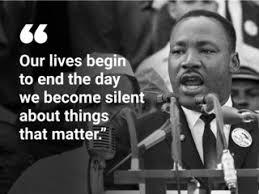
A Telling Footnote in the History of Women's Rights
This January 2019 piece by Amanda Foreman reveals just how ancient and bitter this struggle for women's rights can be:
"What [these women] want is complete freedom...Once they have achieved equality, they will be your masters." -- Cato the Elder in 195 B.C., defending a law being repealed that had banned women from owning a half ounce of gold.
https://www.wsj.com/articles/unenforceable-laws-against-pleasure-1154834...
Complicated and requiring EQ, the struggle continues today.

